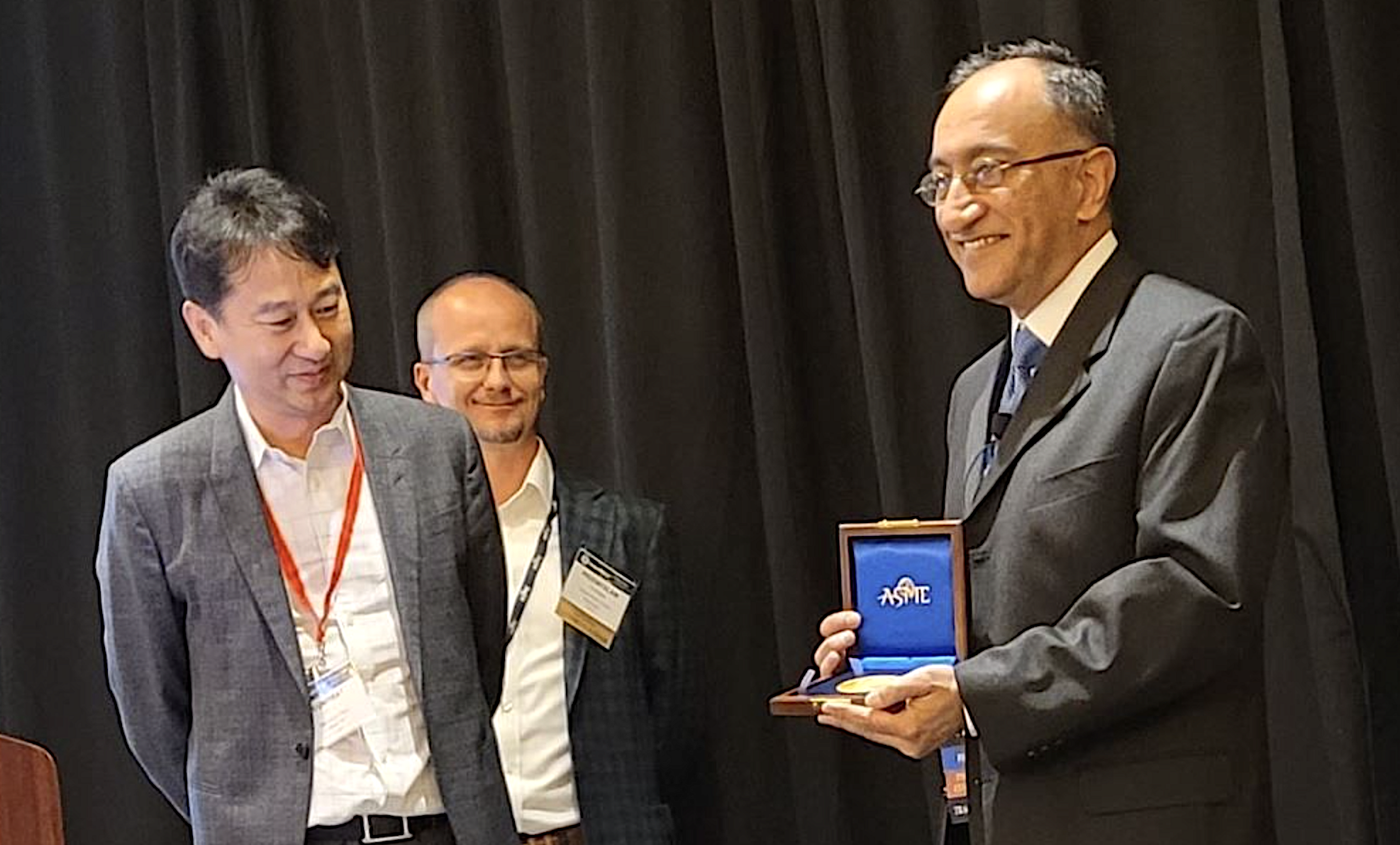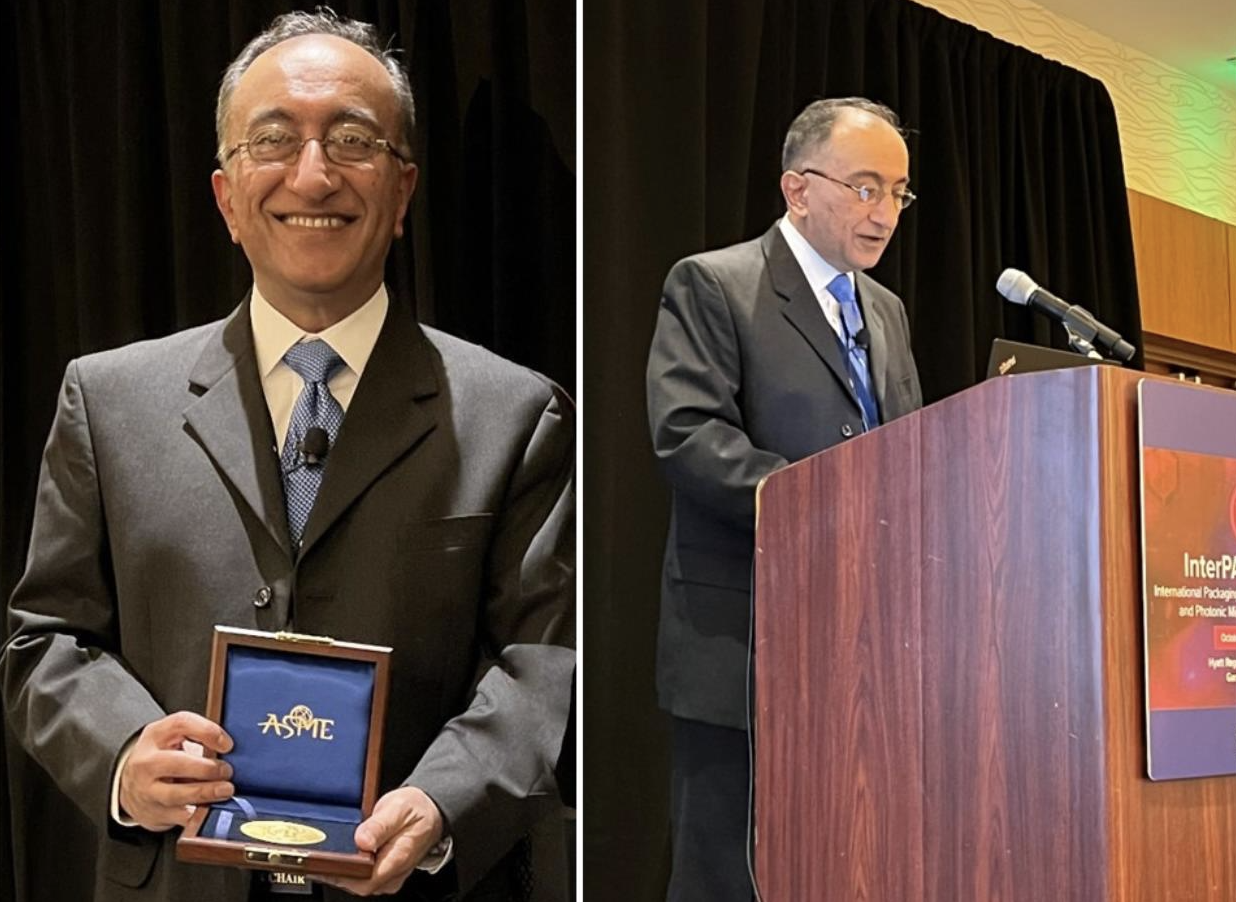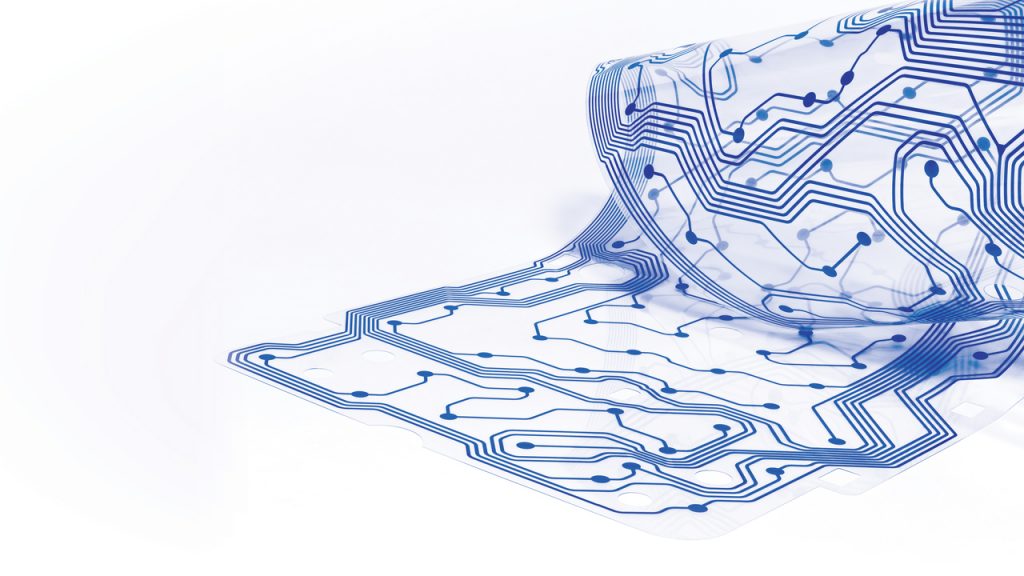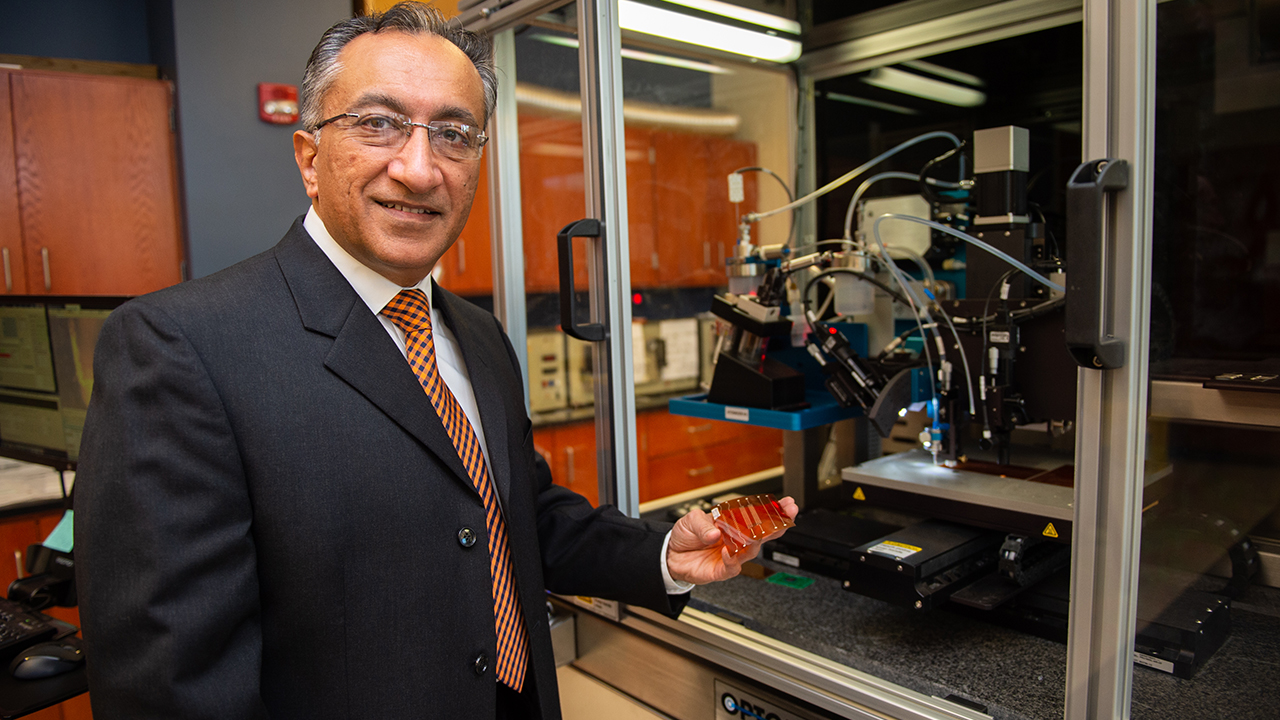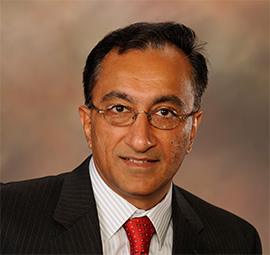Pradeep Lall, the MacFarlane Endowed Distinguished Professor of mechanical engineering, is the 2023 recipient of the SEMI FlexTech prestigious FLEXI Award for R&D Achievements. The award, which recognizes world-class research originality in demonstrating the commercial potential for flexible hybrid electronics (FHE) or printed electronics, was conferred at the FLEX Conference held in San Francisco July 11-13.
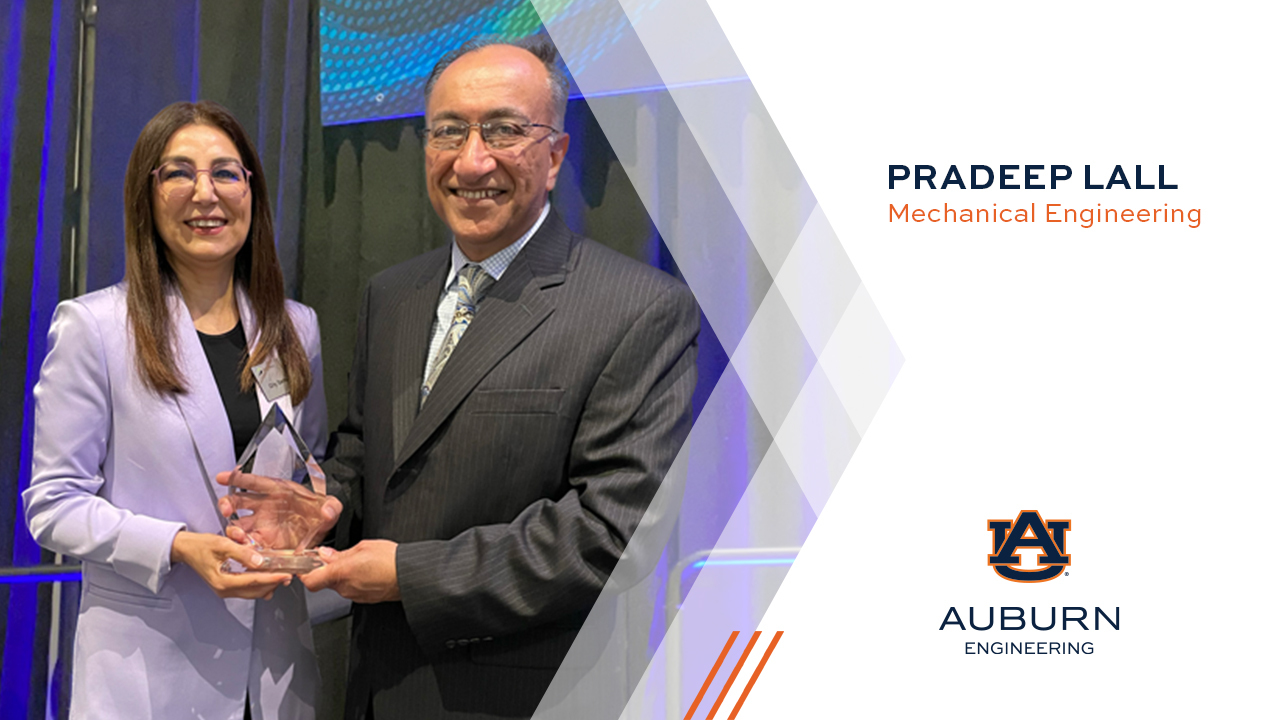
Gity Samadi, Director of R&D Programs (SEMI) presenting Pradeep Lall, the MacFarlane Endowed Distinguished Professor of mechanical engineering, the 2023 SEMI FlexTech FLEXI Award for R&D Achievements.
Lall was recognized for landmark contributions in developing additive manufacturing processes and reliability testing for additive printed flexible electronics.
“There is a dearth of standards for testing and assuring the reliability of additive flexible electronics,” Lall said. “Many companies with high-volume products are very risk-averse when adopting new manufacturing methods due to the risk of premature product failure and subsequent warranty costs. Standards play a key role in advancing the processes, materials, design and reliability assessment to mitigate the risk using additive processes in high-volume manufacturing applications.”
Lall serves as director of the NSF-CAVE3 Electronics Research Center, which, over his 15-year tenure, has expanded its research focus from automotive electronics to include military, defense, aerospace and wearables; the center has also achieved global prominence for advancements in extreme environment electronic systems.
“This is a unique and special time in the development of next-generation electronics,” Lall said. “Manufacturing is making a comeback in the United States. Many young engineers may not have experienced electronics manufacturing owing to the migration of much of the installed manufacturing infrastructure to other geographic locations. Additive methods provide a unique pathway for creating high-mix, low-volume electronic products and newer pathways for customization than have existed in the past. The newer methods allow smaller and medium-sized companies with lower access to capital to launch products by lowering the barriers to entry related to the minimum volume needed for an economically viable product. It is special to be part of the solution process.”
In 2015, Lall led the Auburn University team that was part of the winning proposal for the foundation of the NextFlex National Manufacturing Institute. Lall serves on the technical council of NextFlex and is the academic co-lead of the asset monitoring and automotive electronics technical working groups. Auburn University is the tier-1 founding member of the NextFlex National Manufacturing Institute.
“Professor Lall is a distinguished faculty member with over 900 technical papers,” said Jeff Suhling, the department chair of mechanical engineering.
Many of those papers reflect research instrumental in achieving surface-mount assembled additively printed circuits. Lall regularly presents at the FLEX Conference focusing on process, material and reliability advancements for additively printed FHE and is the academic co-lead of the SEMI Task Force on FHE Reliability Standard Development.
“The FLEXI R&D Achievements award is a fitting recognition of Professor Lall’s seminal contributions to the field of additive printed electronics and is exceptionally well deserved,” said Mario Eden, dean of engineering.
Lall calls that recognition “humbling and gratifying.”
“Taking the first of the kind of phenomenon for maturation to higher technology readiness levels was the realm of corporate labs in the distant past but over the years, the corporate research labs have largely vanished,” he said. “Organizations such as NextFlex and SEMI FlexTech have played a key role in straddling the proverbial ‘valley of death’ for new technologies, and I’m proud to be a part of that.”
Media Contact: Jeremy Henderson, jdh0123@auburn.edu, 334-844-3591
